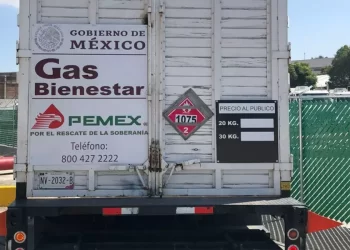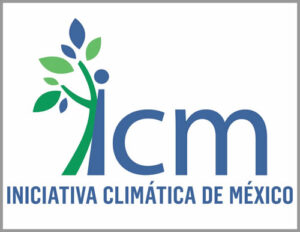Redacción / Energía a Debate
Las seis asociaciones del acero en Canadá, México y Estados Unidos instan a sus respectivos gobiernos a asegurar que las negociaciones del Tratado de Libre Comercio de América del Norte (TLCAN) incluyan principios clave que den lugar a un incremento del consumo de acero en Norteamérica, a un aumento del comercio regional (intra-TLCAN) y eleven su participación de mercado para los productores del TLCAN, según informaron hoy.
En una declaración conjunta enviada a los respectivos gobiernos, representantes del Instituto del Hierro y del Acero de Estados Unidos (AISI), la Asociación de Fabricantes de Acero (SMA), la Asociación de Productores de Acero de Canadá (CSPA), la Cámara Nacional de la Industria del Hierro y del Acero de México (CANACERO), la Industria de Aceros Especiales de Norteamérica (SSINA) y el Comité sobre Importaciones de Productos Tubulares (CPTI), resaltaron las siguientes recomendaciones para modernizar el TLCAN:
-
Reforzar las reglas de origen e incrementar el valor de contenido regional;Fomentar la cooperación y la coordinación en acciones para el control del comercio desleal;Establecer rigurosas disciplinas monetarias;Establecer disciplinas de mercado sobre las empresas estatales (SOEs); y,Mejorar el funcionamiento y la coordinación de los procedimientos aduaneros y la infraestructura fronteriza.
“El TLCAN ha proporcionado beneficios significativos a las industrias siderúrgicas de Estados Unidos, México y Canadá. Esto se ha dado como resultado el fortalecimiento de las cadenas de valor del sector manufacturero de Norteamérica, especialmente en clientes importantes como lo es la industria automotriz. Ha contribuido a incrementar las exportaciones, inversiones y ha ayudado a que la industria siderúrgica se mantenga globalmente competitiva. Si bien, consideramos al TLCAN como un acuerdo exitoso, después de 23 años, podemos modernizarlo y fortalecerlo” declararon las asociaciones. “Agradecemos la oportunidad de trabajar con nuestros respectivos gobiernos para reexaminar y modernizar el acuerdo”.
A continuación, la declaración de la industria del acero de América del Norte con recomendaciones para actualizar el TLCAN:
The North American Steel Industry?s Recommendations for Updating the North American Free Trade Agreement
The North American Free Trade Agreement (NAFTA) has provided significant benefits to U.S., Canadian and Mexican steel industries. The agreement has resulted in strengthened North American manufacturing supply chains, especially with key customer groups like the North American automotive industry. It has contributed to increases in exports, investments, and helped the steel industry remain globally competitive.
Since NAFTA entered into force, trade in steel products between NAFTA countries has increased by 117.2 percent, more than doubling. Indeed, today the vast majority of North American steel exports are made within the region ? 97 percent of Canadian steel exports are to the United States and Mexico, 90 percent of U.S. steel exports are to Canada and Mexico, and 76 percent of Mexican steel exports are to Canada and the United States. Combined, 88 percent of all North American steel exports are within the region, making tariff-free trade within North America critical to the industry?s success.
Recognizing the strategic value of steel production to the NAFTA region, in 2003 the three NAFTA governments created the North American Steel Trade Committee (NASTC) to coordinate government and industry actions to jointly enhance the conditions for continued growth and prosperity for steel in the region. The NASTC process brings together both government and industry representatives from the three countries to discuss public policies important to the competitiveness and growth of the NAFTA steel industry.
Domestic policies and actions in all three NAFTA countries should be closely aligned in defending the region from unfair trade. This includes: cooperating on efforts to strengthen our respective trade remedy laws; developing tools and processes such as coordinated enforcement and information sharing; addressing global excess steel capacity through joint participation in the new G20 Global Forum Steel Excess Capacity; and continued treatment of China as a non-market economy for the purposes of calculating trade remedies.
The North American steel industry views NAFTA as a successful agreement, but after 23 years, one that can also be modernized and strengthened. Ultimately, the goal should be to grow consumption of steel in North America while increasing intra-NAFTA trade and market share for NAFTA producers.
The following are the North American steel industry?s recommendations for upgrading NAFTA:
-
Strengthen Rules of Origin (ROO) and Enhance Regional Value Content (RVC) Requirements: The three countries should agree to updated ROO and RVC requirements that incentivize investment and job growth in the region. In particular, ROO and RVC provisions for steel-containing goods should ensure that North American manufactured goods are built with North American steel.Promote trade enforcement cooperation and coordination: Importation of unfairly traded steel in any NAFTA country injures all North American steel producers, workers and local economies. Accordingly, the three governments should strengthen existing procedures and create new procedures to address circumvention and evasion of antidumping and countervailing duty orders, while also facilitating the implementation of third-country dumping actions where appropriate. The three countries should closely collaborate to develop stronger and better-aligned trade remedies to combat unfair trade practices from non-NAFTA countries.Establish enforceable currency disciplines: Currency manipulation makes exports more expensive and imports cheaper, and in the process undermines some of the economic benefits of free and fair trade. Canada, Mexico and the United States do not manipulate their currencies; however, an enforceable currency discipline in an updates NAFTA would establish an important precedent for future trade agreements.Establish disciplines on the conduct of State-Owned Enterprises (SOEs): SOEs often receive non-market advantages that create market distortions and lead to anti-competitive practices, creating an un-level playing field for market-based competitors. The three NAFTA governments should agree to implement strong and enforceable disciplines on SOEs that prevent unfair subsidization and other forms of government support and ensure market access for private producers. Like a currency discipline, this would create an important precedent for future free trade agreements.Improve customs procedures operation & coordination; Upgrade border infrastructure: For many industries, especially those engaged in just-in-time manufacturing, shipping and receiving steel in a timely and efficient manner is critical. To maximize efficiencies, an updated NAFTA agreement should streamline existing customs procedures to ensure the free, fair and fast flow of commercial goods between nations. Additionally, infrastructure upgrades, specifically to ports and border-crossing facilities, would further facilitate efficiencies and limit bottlenecking.
NAFTA is an indispensable agreement for the North American steel industry and its customers in steel-consuming industries. The U.S., Canadian, and Mexican steel industries welcome the opportunity to work with our respective governments to re-examine, strengthen and modernize the agreement.
____________________

 Transporte y Logística
Transporte y Logística Tecnología e Innovación
Tecnología e Innovación Sustentabilidad
Sustentabilidad Responsabilidad Social
Responsabilidad Social Crisis Climática
Crisis Climática Pobreza Energética
Pobreza Energética Revista
Revista

 Infografías
Infografías



















